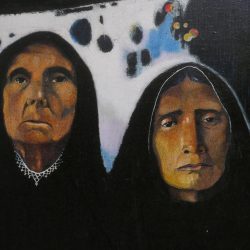The biggest and one of the most complicated countries in Latin America. Mexico is not officially part of Central America (it belongs to North America and is closely economically aligned with the US). But its history is very much Latin, with indigenous cultures, the Spanish conquest, and a long-standing conflict between Conservatives and Liberals. A short history of Mexico.
The one essential thing to know to understand Mexico?
It is both eternally instable but also remarkably successful despite that. Mexico is massive in its size, ethnically diverse, rich in natural resources and people are very proud of their country. They also know that it is not living up to its potential, due to political instability, endemic corruption and the power of drug cartels. And these three factors are of course intertwined.
Alright. But what are the Mexicans really made of?
Hard to say what happened in this area before the big civilizations arrived, but humans have been living there for at least several thousands of years. Then several civilizations formed: Olmecs, Maya (responsible for sites such as Chichen Itza, Uxmal and Palenque), Teotihuacan (the site of two massive pyramids north of Mexico City, Toltecs and Aztecs. The latter were the founders of Tenochtitlan, which is now Mexico City, in an area that was then dominated by Lake Texcoco and dense forests.
The inevitable question: how much damage did the Spanish cause during their conquest?
They completely reformed the country from 1521 onwards. Spanish became the main language, Roman catholicism the dominant religion, ‘colonial architecture’ the main building style. It also meant the end of the Aztec empire, which was destroyed where possible. Spanish rule ended in 1821, though there were several attempts to regain the territory by Spain and by other countries (France, and the USA claimed land as well).
And they were happy ever after the 1821 independence?
Nope. Just like in many other Latin American countries, Liberals and Conservatives fought each other. After a period of stability under president Porfirio Diaz, the Mexican Revolution happened between 1910 and 1920.
The end of the story was that two revolutionary generals became president (one of them was assassinated) and founded the PRI political party. That stayed in power from 1929 until 2000, in what was a semi-dictatorship, and a corrupt one at that. Especially the elections of 1988 were so blatantly fraudulent, the decline of the PRI was inevitable.
Was all bad in that period?
No. World War II actually brought Mexico prosperity, and after that came a period of continuous economic growth known as the Mexican Miracle. After the fraudulent elections of 1988, more neoliberal policies were introduced which also meant a tighter integration with the US and Canada through the NAFTA free trade treaty. Nonetheless, lots of Mexicans went looking for a better future in the United States.
You didn’t mention the war on drugs?
That officially started only in 2006, under president Calderon (presidents can only be elected once in Mexico, for a six-year rule). He escalated the fight with the drug cartels, responsible for the transport of heroine, cocaine, MDMA and more into America.
It has sent the country into a vicious spiral of violence. Corruption on all levels of government (and partially military) is still endemic, civilians get caught up in wars between cartels. The violence only rarely flares up in the biggest cities (Guadalajara and Mexico City), but tends to dominate life the closer you get to the US border.
An end is not in sight at the time of writing (2021), also because the ‘hugs not gunshots’ approach by president Lopez Obrador has not yielded any significant results. Watch the documentary ‘Cartel Land’ on Netflix to get an idea of the problem.





